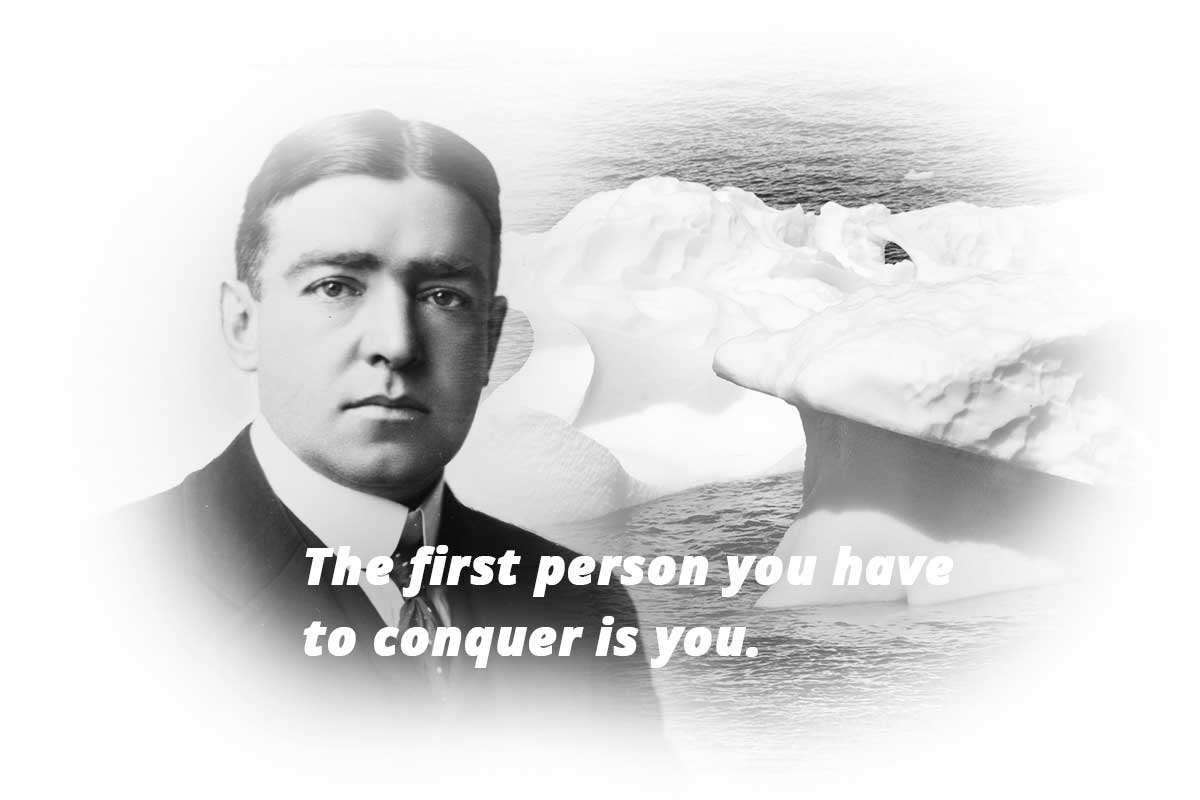WHAT’S YOUR BOLD VISION? DO YOU HAVE ONE?

I was @nationaltrustqueensland Gala Awards event recently and the presenter, @TimJarvisAM talked about revisiting Sir Ernest Shackleton’s extraordinary Antarctic expedition. What Tim Jarvis had achieved was also extraordinary – successfully re-enacting Shackleton’s famous Antarctic trip wearing similar clothing and sailing a keel-less boat.
What was it about Shackleton that made it possible for him and his team of some 27 men to survive being shipwrecked in crushing ice and being stranded in freezing conditions, miles from anywhere? A leader, regardless of position can make a difference when they have a bold vision and that difference can ripple throughout their lives and the lives of others and like Shackleton have a profound impact for ten decades. He took action.
Let’s have a close look at Shackleton’s skills? This will help us to understand his bold vision and possibly unpack and give you clarity about your bold vision in life.
The leadership compass
For many years, researchers and leadership practitioners have investigated the traits that make up a successful leader. Connecting Shackleton to the traits will show us that he must have had exceptional skills in his ability to set direction. He had a compass – and a good one at that to be able to navigate in an environment with very little visibility. What do we know about the leadership compass? You have one. Have you set a direction of where you will go and is it true to yourself? Perhaps it would be helpful to sit down and draw a compass with N, S, E and W and write down what you can see at the north point. Is the picture clear? Is this your purpose? Are you ready to take action?
For Shackleton, his purpose must have been many-fold. Two the spring to mind are the survival of his team and reaching his destination alive in unforgiving circumstances. If we were to jump forward 100 years from 1917, what has happened in that time that has been punctuated by great leaders who have survived extreme situations and brought with them teams, organisations, and countries? Think about other explorers, medical ‘breakthrough’ pioneers, peace-makers, company leaders. It is fair to say that these leaders would have a very strong sense of purpose. Their compass is set in the right direction as they take action.
Sharing the bold vision
Shackleton had responsibility – the lives of a team of 27 or so men who had signed up to work with him and go on a big trip – down under. I have read that Shackleton had the unfailing loyalty of all his men and was able to unify the team despite there being men from various backgrounds and abilities.
Somewhere along the line, Shackleton must have been able to inspire the team and build trust between him and the individuals. Inspiration and trust certainly enables the ability to influence effectively and in this case, one can conclude that the team must have trusted Shackleton with their lives – otherwise what would have pulled them to a place where the weather can change minute by minute and the very nature of the environment can kill a person within minutes.
What can we learn from this? Shackleton must have been able to manage crises regularly, consider the options and apply resources to achieve an outcome. Can you imagine the number of crises he faced and how limited resources were used to achieve the survival of the whole team and his bold vision.
Be prepared – as much as you can
Books about Shackleton’s Trans-Antarctic Expedition highlight that one of his strengths was the ability to plan trips carefully. Scientific and exploratory trips were needed to assess the environment. What this shows is that Shackleton wanted to ensure he had a well-formed goal so that the outcome was achievable. This can only happen when we are prepared as much as we can and be able to change when circumstances change. To accept the possibility that circumstances can and will change is part of leadership. In what way are you prepared?
In the now
Somehow, I doubt that Shackleton sat back amongst the crises he faced and wondered about strategic futures. He had to be both ‘in the now’ and be agile. In other words, he focused on what was right before him and prepared how to best maximise a solution even-though the solution may have been short-lived at times. In the end, they survived. His focus, determination and agility were instrumental in this amazing story of survival. He was always ‘in the now’ when faced with uncertainty.
Self –Leadership
Self-belief gives you the ability to lead self and others. After listening to Tim Jarvis AM and reading about Shackleton’s expeditions, I can really feel the strength within Shackleton’s belief that he had the ability to save himself and the men in his charge. As a leader, you are there to serve and to guide with a mission to help others to realise their own strength within. This in itself is a bold vision and a bold outcome.
In summary, Shackleton was indeed a leader and has inspired many who have followed in his steps, one being Tim Jarvis AM.
After reading this article, I hope you realise that you have the ability to maximise the leader within.
As you want to know more about purpose, focus and action, contact MindsTomorrow.
Want to know more?
Enrol in the Self Leadership program workshop now.
Photo courtesy of: Cool Antarctica



